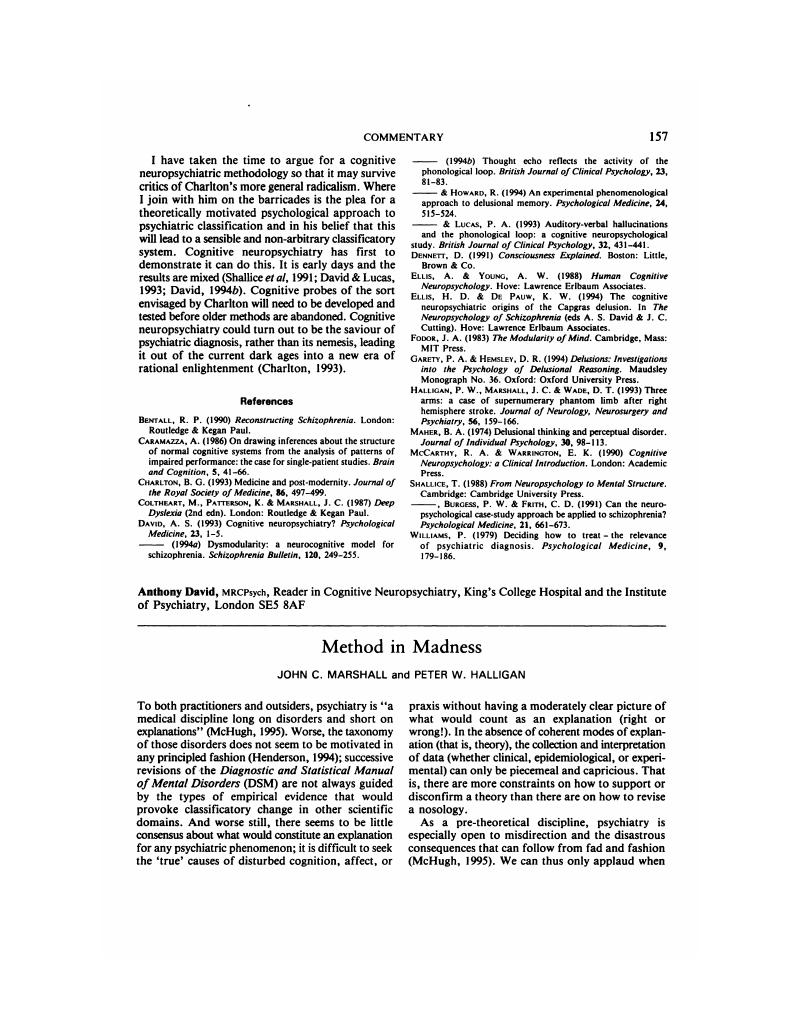Crossref Citations
This article has been cited by the following publications. This list is generated based on data provided by Crossref.
1996.
Editorial.
Cognitive Neuropsychiatry,
Vol. 1,
Issue. 1,
p.
1.
Halligan, Peter W
and
David, Anthony S
2001.
Cognitive neuropsychiatry: towards a scientific psychopathology.
Nature Reviews Neuroscience,
Vol. 2,
Issue. 3,
p.
209.
David, Anthony S.
2006.
A Method for Studies of Madness.
Cortex,
Vol. 42,
Issue. 6,
p.
921.
Connors, Michael H.
and
Halligan, Peter W.
2020.
Delusions and theories of belief.
Consciousness and Cognition,
Vol. 81,
Issue. ,
p.
102935.
Raju, Venkateshwarla Rama
2023.
Quantifiable objective psychopathology via cognitive neuropsychiatry: A hybrid-study Part I.
IP Indian Journal of Neurosciences,
Vol. 9,
Issue. 1,
p.
8.




eLetters
No eLetters have been published for this article.